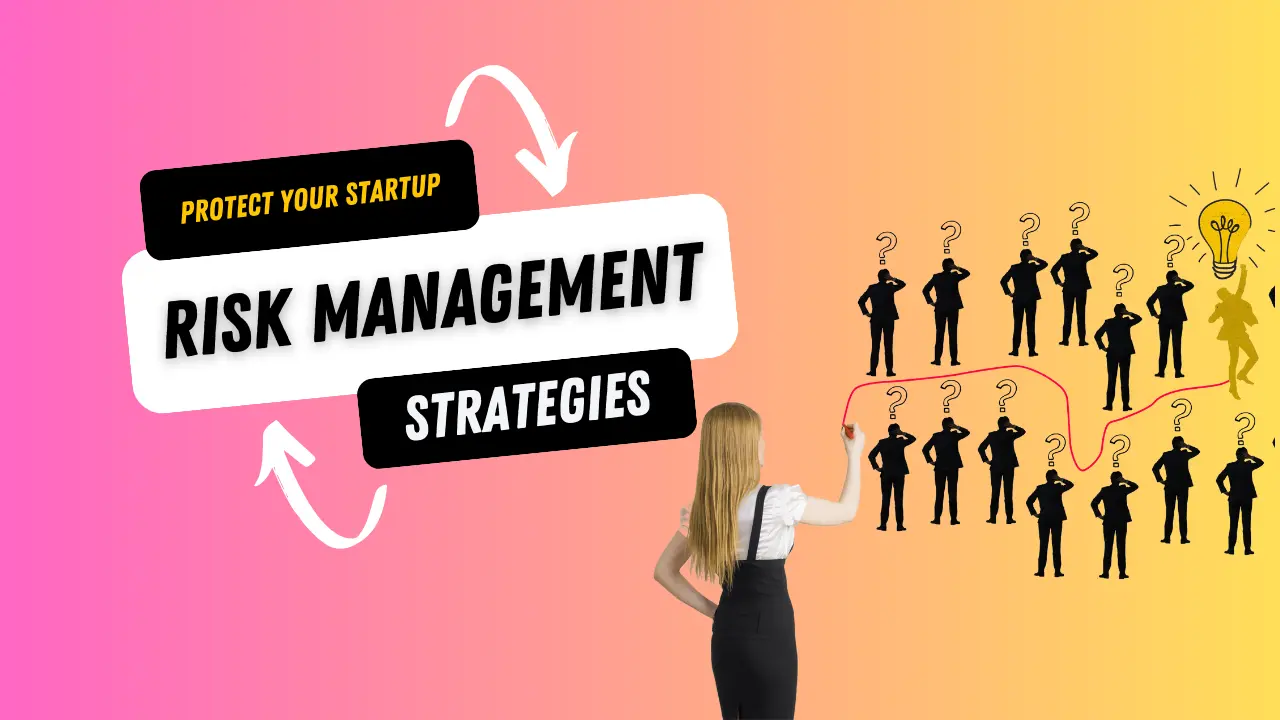
The Ultimate Guide to Protecting Your Startup: Risk Management Strategies You Need to Know
Are you a startup owner thinking about how to protect your business from the unexpected twists and turns ahead? You aren't alone, every business owner should understand the importance of protecting their startup from unexpected risks. Everyone knows how important this is to be successful in this competitive world.
Many organizations crumble because they don't have the right safeguards in place. However, implementing proper risk management strategies helps mitigate unnecessary risk. Early mitigation is crucial to ensure business continuity and avoid costly threats.
Key Takeaways
- Understand the importance of protecting startups from unexpected risks and the severe consequences of neglecting this.
- Learn about various types of risks that startups face, including operational, financial, market, legal, and reputational risks.
- Explore methods for identifying and assessing risks, such as market analysis and regular risk assessments.
- Discover risk management strategies like risk avoidance, reduction, and transference to mitigate potential losses.
- Recognize the need for creating, monitoring, and reviewing a comprehensive risk management plan to ensure long-term sustainability and success.
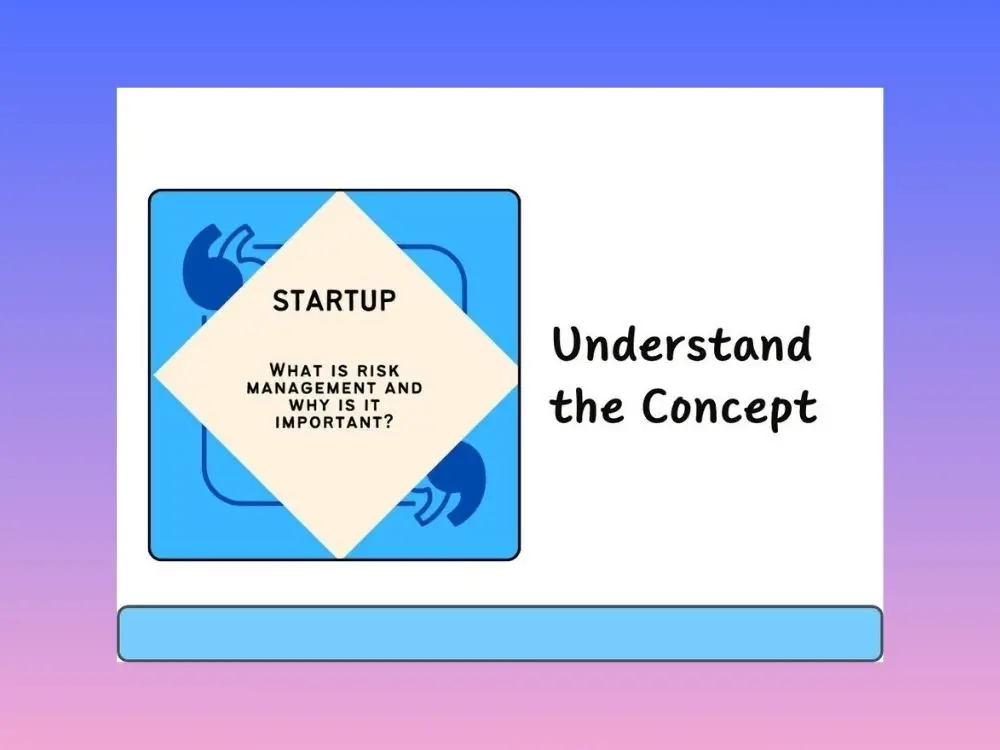
The Risk of Not Protecting Startups
Failing to protect startups from risks causes significant impacts. Inexperienced entrepreneurs underestimate the importance of protecting their intellectual property and confidential data. This inadvertent behavior may expose them to theft, fraudulent activities, and potential legal disputes.
Negligence in establishing adequate security measures can cause severe consequences like reputational harm, a decline in the trust of investors and customers, and ultimately, the business's collapse. Safeguarding a startup's physical assets is necessary for the success and sustainability of a business.
Moreover, by understanding the threats and taking necessary proactive steps, startup owners can protect their businesses and ensure their long-term success. In this ultimate guide, we will discuss the key risk management strategies that you need to know to keep your business safe and secure.
Identifying Risks
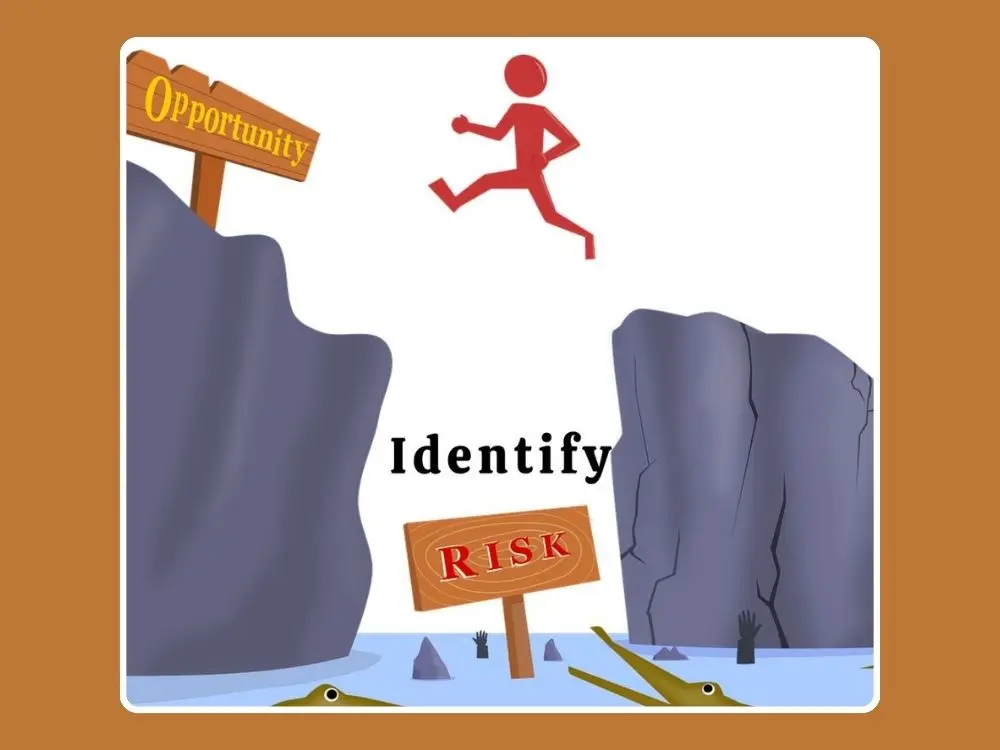
a) Types of Risks in Startups
Identifying the risks is one of the crucial things for the success of your business. Startups encounter various types of risks that can be a challenge to their success. These risks are identified as:
- Operational Risks
- Financial Risks
- Market Risks
- Legal Risks
- Reputational Risks
Financial risks are challenges that arise from managing cash flow, funding sources, and overall financial stability. For instance, startups that are classified as high-risk merchants due to the nature of their industry or business model may face greater financial challenges. This may include difficulties in securing a proper payment processing solution or merchant account, higher transaction fees, or high chargebacks.
Market risks occur when there are unexpected shifts in the market, such as changes in regulations, demand, or market competition. Operational risks are related to people management, internal processes, and systems.
Legal risks originate from contracts, intellectual property, or regulatory compliance. Finally, reputational risks are any potential damage to the startup's brand reputation due to scandals or misinformation. Finding out and managing these potential risks is helpful for startups to navigate challenges and create a resilient business.
b) Methods for Identifying Risks
There are certain methods startups follow to identify potential risks. Plus, early identification is useful to mitigate risks efficiently. Conducting a thorough market analysis or a proper screening process is one of the methods for identifying risks. This analysis contains an examination of the market competition, trends, and consumer preferences.
Another method is to identify internal risks like cash flow projections, team dynamics, and product development timelines. When the startup grows, it's vital to conduct regular risk assessments and implement strategies accordingly. The most important part of risk management is to remain proactive and always stay one step ahead of potential threats.
Risk Assessment
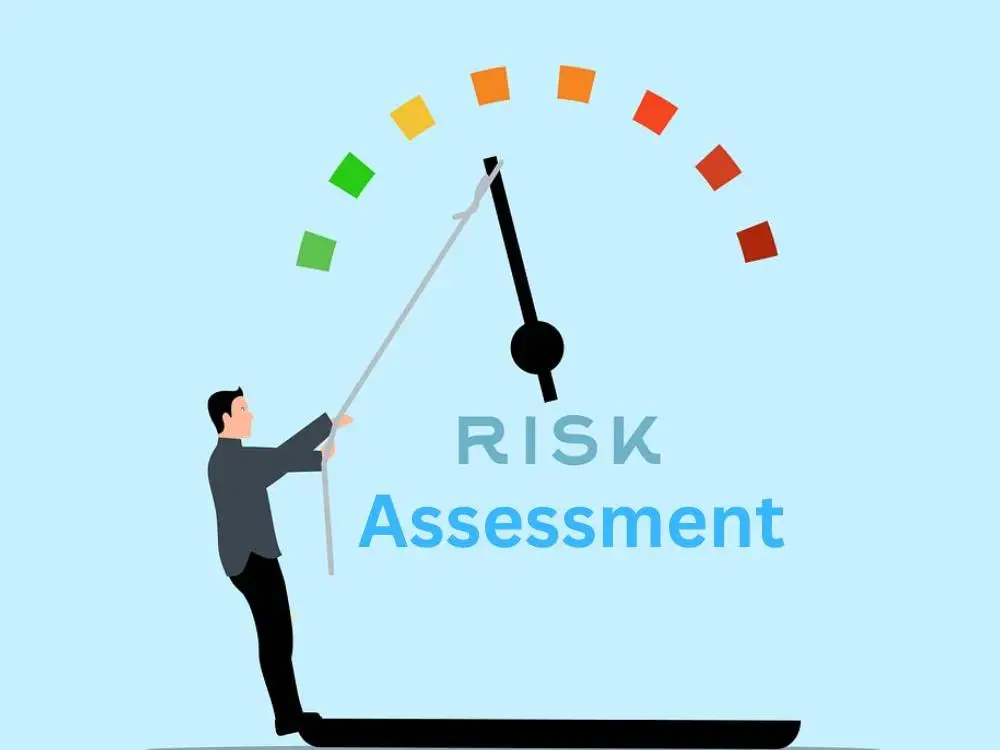
a) Evaluating Risks
This is an important step in the risk assessment process, which helps measure the impact level and consequences. Startup businesses create a comprehensive plan to mitigate risks and ensure their business success. They can do this by effectively finding out the potential risks and their impact level.
It's necessary to thoroughly evaluate each risk, which aids in creating a contingency plan to address it. Further, frequent monitoring and reassessment of risks must be integrated into the business plan. This helps make sure that the company is well aware of potential threats. Overall, a properly executed risk assessment can save a startup from business failure and help ensure long-term success.
b) Risk Assessment Tools
Risk assessment tools are useful for identifying potential hazards and determining the level of risk associated with each hazard. Common examples include such as risk matrix, decision trees, bowtie models, simple checklists, and sophisticated software programs.
By using these tools, startups can make informed decisions about resource allocation and avoid costly impacts. In addition to that, regularly using these risk assessment tools helps lead a culture of safety in the organization.
Further, employees become more aware of potential risks and take steps to avoid them. Choosing the right risk assessment tool for specific needs is important to ensure the safety and success of the business.
Creating a Risk Management Plan
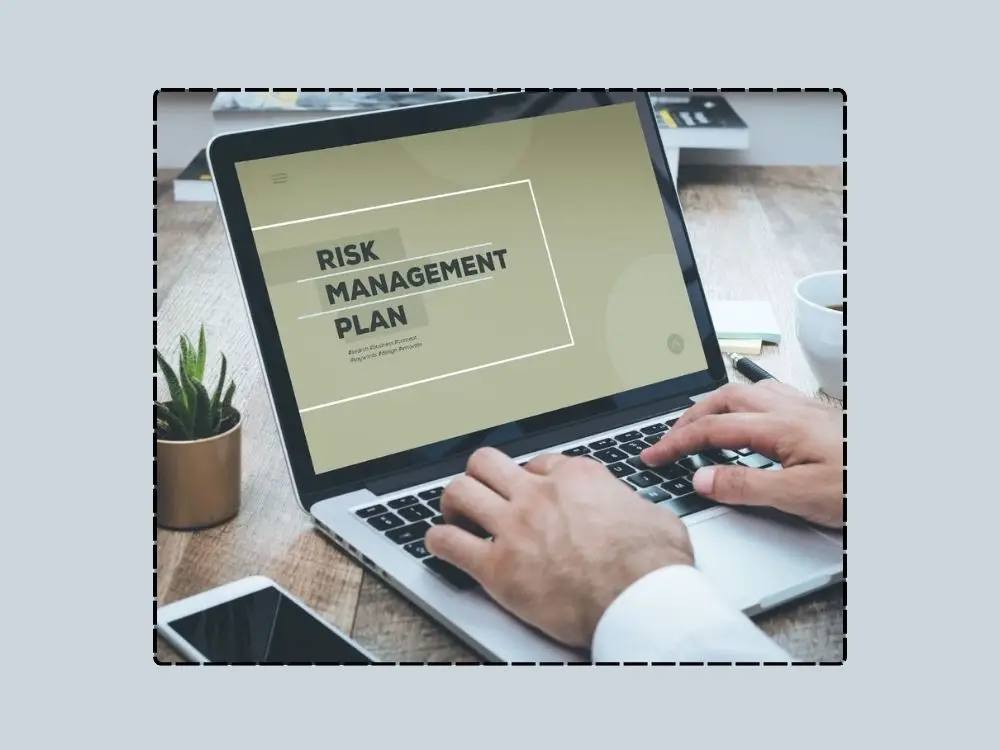
a) Goals of a Risk Management Plan
The primary goal of a risk management plan for a startup business contains many key aspects. First is identifying potential risks, which helps mitigate them effectively. The second is analyzing and evaluating the identified risks. This helps evaluate the impact on financial losses, damage to the business's reputation, and legal exposure.
Eventually, treating the risks with proper care is important. Plus, monitoring and reviewing them continuously is helpful to avoid future risk occurrences. A complete risk management plan should provide effective communication to all stakeholders. Plus, stakeholders' awareness is a must for managing these risks and taking essential measures when they occur.
b) Benefits of a Risk Management Plan
Startups receive several benefits from a well-established risk management plan. It can be a challenging task to identify potential risks and their impact without having a precise and complete risk management plan.
A competent plan allows startups to identify and prioritize potential risks, evaluate the likelihood and severity, and implement necessary measures to mitigate them. Moreover, by assessing risks in this particular manner, businesses make informed decisions, allocate resources efficiently, and safeguard their operations against unpredictable events.
Implementing Risk Management Strategies
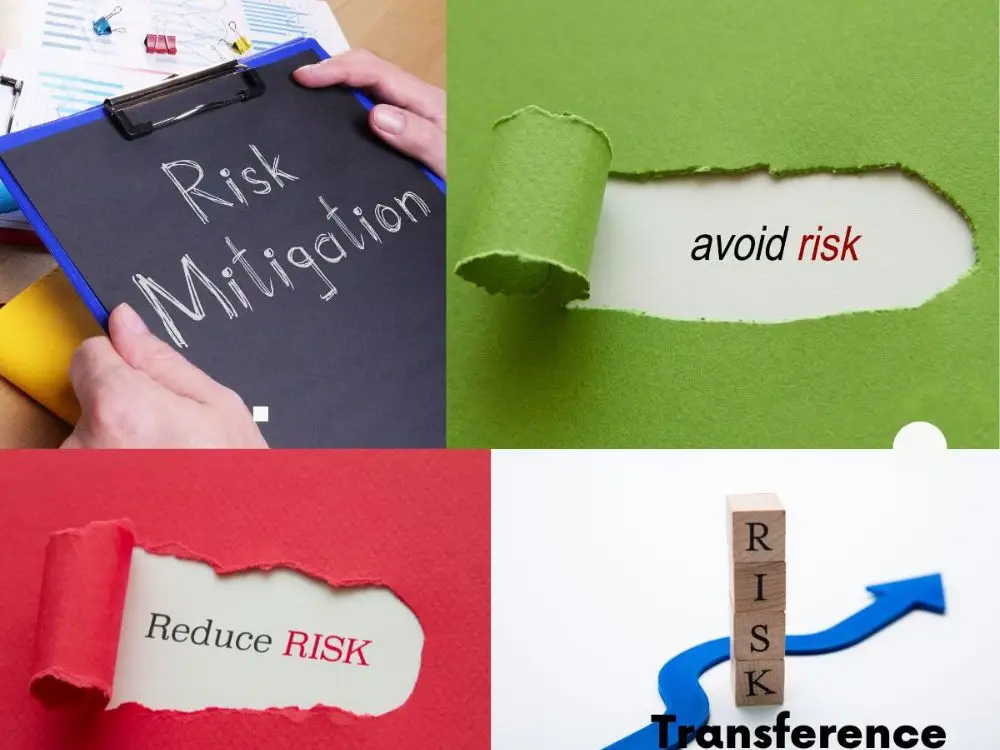
a) Mitigating Risks
This is prominent for startup businesses to reduce financial and operational losses. Risks arise from various factors such as economic instability, cyber threats, natural disasters, and regulatory changes.
A reliable risk management plan helps businesses identify potential risks and manage them effectively. By mitigating risks, businesses can protect their assets, maintain the trust of their customers, and ensure operational continuity.
Some typical risk mitigation strategies include risk avoidance, risk reduction, risk transference, and review & monitoring of the risk. It's vital for startup businesses to regularly assess and update their risk management plan to stay prepared for evolving threats.
b) Risk Avoidance
Avoiding risk is a crucial part of any business, where startups can't ignore the likelihood of potential risk occurrences, particularly businesses that have a notable impact on the organization's financial health and reputation.
Startups need to identify these risks to take the necessary steps before anything goes wrong. Avoiding them consists of many tactics, such as:
- Implementing robust safety measures
- Building redundancy
- Developing a comprehensive contingency plan
- Regularly reviewing and updating policies
- Training employees on risk awareness
c) Risk Reduction
When the risk is hard to avoid, then risk reduction is the option for businesses that allows companies to minimize potential losses and protect their assets. By identifying and analyzing possible risks, startups can implement effective risk management strategies. This safeguards their financial stability and reputation.
Moreover, risk reduction mainly involves implementing policies and procedures to reduce the number of threats. Additionally, firms can reduce their financial risks by diversifying investment portfolios. Plus, taking a proactive approach to risk reduction is vital for businesses to avoid costly setbacks and position themselves for long-term success.
d) Risk Transference
Transferring the risks to a third-party agent is one of the risk mitigation strategies followed by many businesses. Generally, it's transferred to an insurance company or a strategic partner. By doing so, businesses can able to mitigate their exposure to potential losses and protect their assets.
Yet, it is important to understand that risk transference doesn't eliminate the risk. Instead, it will transfer the responsibility of handling them to another party, such as an insurance company or outsourced service provider. Also, considering potential risks carefully and choosing the right partner for risk transference is vital.
Monitoring and Reviewing Risks
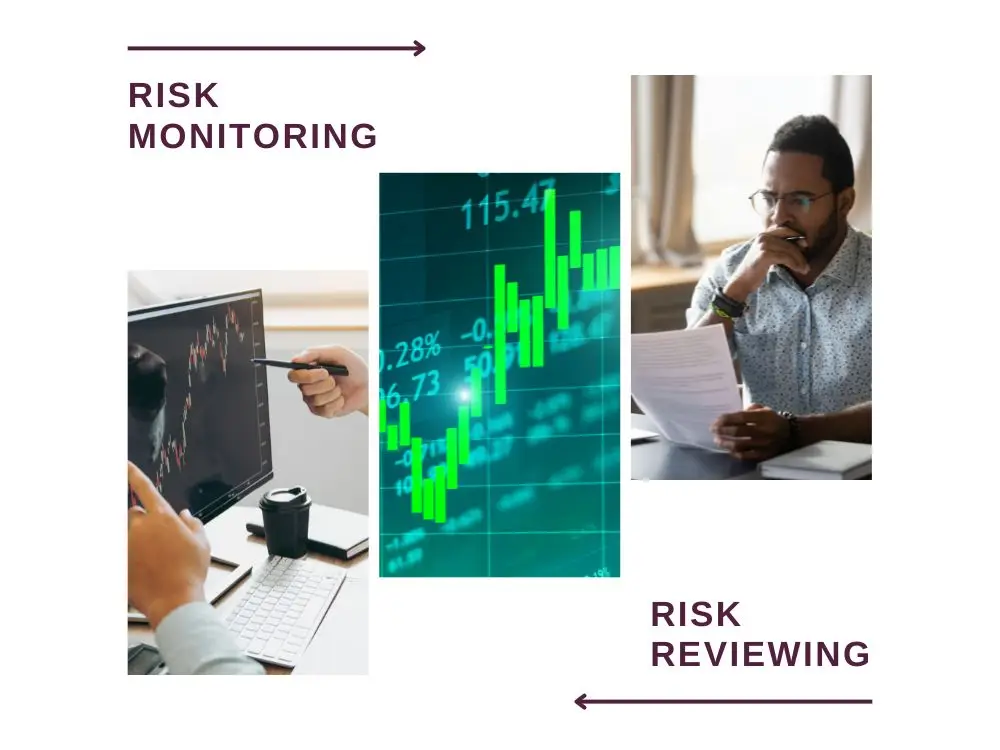
a) Importance of Monitoring and Review
Risk management mandates the importance of monitoring and reviewing risks in any organization. Regular monitoring and reviewing provide invaluable insights for effectively managing risks. This is helpful for businesses to stay ahead of potential threats.
Further, this proactive approach enables companies to avoid losses and minimize damages. Businesses that don't actively monitor and review risks may struggle to perfectly manage them. This may lead to significant financial losses and reputational damage.
b) Methods for Monitoring and Reviewing Risks
There are certain methods followed for monitoring and reviewing risks to maintain a viable risk management system. Startups should have a proper risk management plan to identify risks, assess their impacts on the firm, and develop the best strategies to mitigate them.
Various ways are used to monitor the risks, such as conducting risk assessments and continuously monitoring & reviewing them using quantitative and qualitative approaches. It helps businesses identify potential risks, set risk management strategies, and track progress.
Final Thoughts
Nowadays, we know the competition in the business world, where startups face a complex set of risks that threaten their long-term survival. To mitigate these risks and protect a startup's future, it's a must to embrace effective risk management strategies.
This article has discussed the key insights into some of the most important risk management concepts and techniques. It includes risk identification, assessment, control, monitoring, and review.
By implementing a proactive risk management approach, startups can minimize the number of negative impacts and avoid business failures. With the right risk management approach, they can build a very successful and sustainable firm.
FAQs
Q1: What are the types of startup risks?
- Operational Risks (related to internal processes and people management)
- Financial Risks (concerning cash flow and funding stability)
- Market Risks (resulting from unexpected market shifts)
- Legal Risks (associated with contracts, intellectual property, and compliance)
- Reputational Risks (damage to the brand or reputation)
Q2: What are the 5 risk management strategies?
The five risk management strategies for startups include:
- Risk Identification
- Risk Assessment
- Risk Mitigation
- Risk Monitoring
- Risk Review
These strategies can collectively help businesses recognize potential risks, evaluate their impact, take steps to reduce or transfer them, and continuously monitor and review the effectiveness of risk management efforts.
Q3: What is the difference between risk avoidance and risk transfer?
Risk avoidance aims to prevent risks from occurring by taking proactive measures within the business itself. In contrast, risk transfer involves shifting the responsibility for managing and handling specific risks to a third party, often through insurance or strategic partnerships. Risk avoidance seeks to eliminate the risk, while risk transfer shares the risk with another entity.
Explore Related Posts
https://smarttoolsai.com/post/credit-card-fraud-and-how-can-businesses-prevent-it
https://smarttoolsai.com/post/kyb-know-your-business-regulations-processes-and-best-practices
.webp)